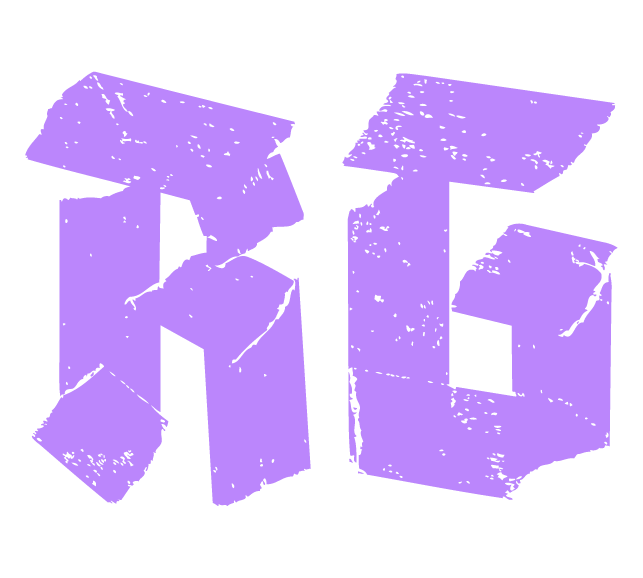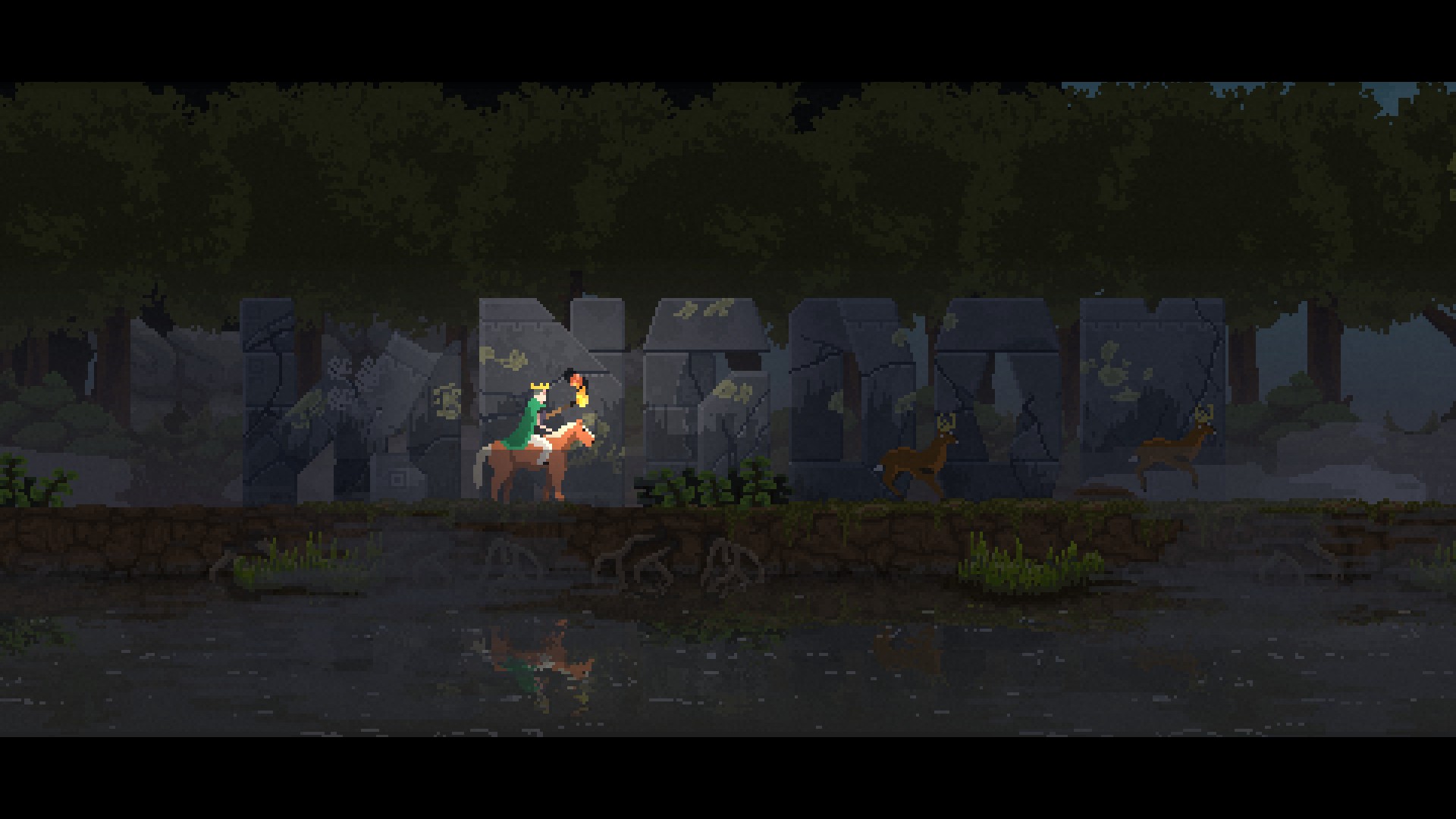While looking for a new game to try out, I’ve explained the inception of this blog to a friend and asked him for suggestions. I share my Steam library with him, and he’s gotten a chance to play some games I have yet to install. He suggested that Kingdom might be a good fit, stating it’s easy to pick up and has unique mechanics. Having seen images of this game pop up from time to time, and since it’s already in my library, I gave it a shot.
Kingdom is a randomly generated, 2-D, side scrolling survival game with modern pixel art. The standout feature of this game is the barebones control scheme. Going into this game blind, I didn’t really know what to expect, but that’s the beauty of this journey.
In Kingdom, players play as a wandering king or queen who has neither a following, nor a penny to their name – only a crown and horse to being. The game begins with a short tutorial which instructs the player to travel to the right of the screen – from here I quickly picked up that there are only three movement controls; moving to the left, the right and pressing shift to make your horse gallop. A few meters to the right, you encounter some lose coins on the ground. Walking over them adds them to your coin pouch.
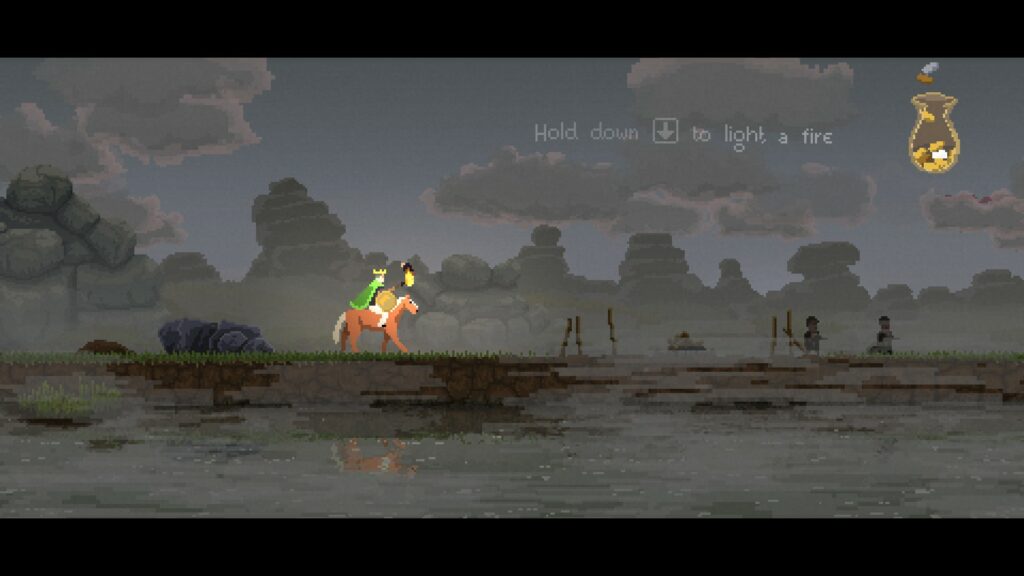
As a sidenote, a standout feature here is the pseudo-physics of the coin pouch in the top right corner of the screen. Coins drop in from the top and fall to the bottom, bouncing off any other coins already in the bag. There is no numerical counter, however, it’s easy to distinguish how many coins are in the pouch as the occasionally shimmer, one by one so that the player can tell distinguish them from one another. The physics here is purely cosmetic, however, it’s a nice touch.
As you progress further to the right, you encounter a small camp with a few people I’ll refer to as wanderers. At this point, the game introduces the fourth and final control button – the down arrow key – which allows you to drop a coin onto the ground; and if doing so near a wanderer, they become one of your villagers. Additionally, you are instructed to hold the down arrow near the campfire to fill the coin slots hovering above – doing so sets the groundwork for your every growing kingdom, however, at this point is more of a humble settlement. This settlement now contains two vendor stalls – one with a bow banner, a second with a hammer banner. The final steps of the tutorial have you walk over to these vendors and hold the down arrow key to fill the coin slots, which in turn will produce a bow, and a hammer for your villagers. Villagers who have not yet been assigned a role will run over to these stalls and pickup and available tools, which in turn converts them into a new role – for now, an archer and a builder.
From here on out, you are given full autonomy with no further hints or instructions. As such, I enjoyed the exploration phase of this game. Travelling over various terrain environments will display a coin slot, similar to those in your settlement, not being too sure what each object will turn into, it’s exciting to invest your hard-earned gold into them and find out what they become. Mud piles, for example, will turn into embedded stakes that function as walls to defend your grounds. Rock piles will turn into archer towers where your villagers can post up and defend from above.
Referring back to hard-earned gold, the game doesn’t explain how you can gather more of this important resource, however, upon observation it becomes clear that archers who are not holding a tower post will run out of your settlement and hunt animals. The animals drop coins which the hunters will collect and when you walk past one of these hunters, they will drop all their gathered coins for you to collect in your pouch.
After a few minutes of exploration, a new mechanic is introduced – the day/night cycle. The sun and moon can be seen in the background of the game, and as soon as the sun sets your villagers will run back to your settlement to seek shelter. Here, I learned the importance of walls and archer towers, as at night, little monsters will rush to your kingdom and try to tear its walls down. These monsters are quickly dispatched by archers; however, the archers don’t have perfect aim so it may take a couple shots to take one of these invaders out.
At this point in the game, I was under the impression that this is an ever progressing save file where over time you’ll get to develop a grand and luxurious kingdom to rule over. I was surprised to discover that’s not the case. As the game seems to encourage exploration and experimentation, I wanted to test what happens if a monster ends up attacking a villager. It turns out, that if they touch one of your villagers, they will first drop their assigned tool – which the monster will grab and scurry off into the wild. Now, if the monster hits a villager who is not holding a tool, the villager will drop the coin you used to recruit them and become a wander once again. Cool, that mechanic is discovered and out of the way – so what happens if the monsters touch you, the player? Testing this out, I discovered that you drop a coin from your pouch each time you’re hit. Fair enough. Letting my curiosity get the better of me, I also wanted to test what happens if you get hit when you have no coins in the pouch. Venturing off in the middle of the long night, I went to locate a devious looking monster and got its attention. It lunged at my character and my crown went flying off! Luckily the game gives you a slow-mo period where you can go retrieve your crown. I still wasn’t satisfied, I needed to know what would happen if I let the monster grab my crown. So again, I let it hit me, but this time I didn’t bother retrieving the crown. The monster quickly rushed to grab it and it began to sprint off.
A message appeared on my screen. “No Crown, No King” along with a plaque showing how many days I had survived.
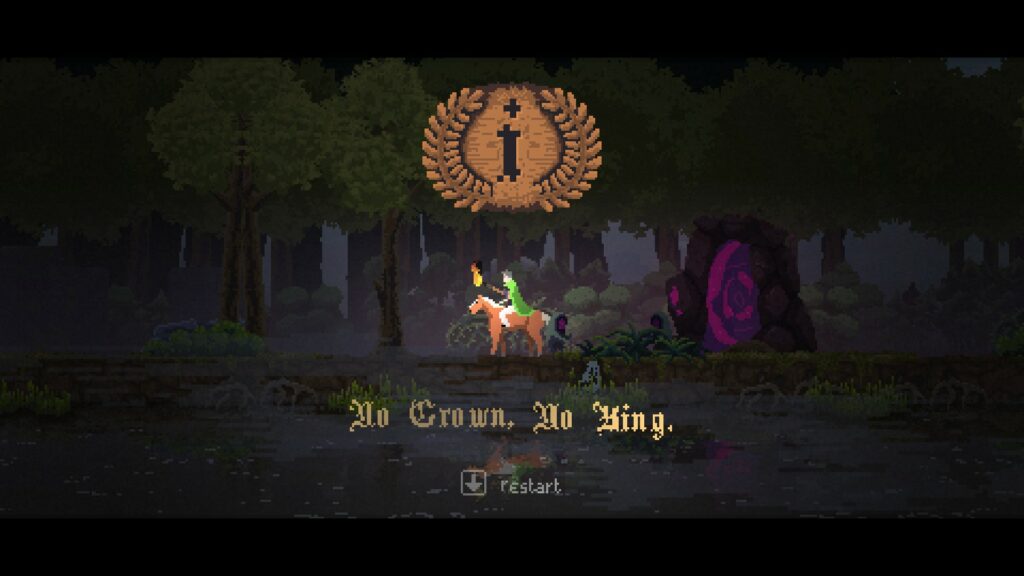
The game then resets, and I finally clued in that this is a ROGUELITE randomly generated survival game.
Not having made it too far into the game, I wasn’t too bothered by this. It was almost a relief as I felt I had made some early mistakes, allocated my fund without though and found myself waiting around most of the time as I didn’t have enough coins to produce upgrades, nor did I have enough hunters to bring back more coins.
The second playthrough, I acted on my early mistakes. I realized that having a large population of hunters/archers is mandatory as they’re the main source of early game income. I invested far less into random buildings as I now knew what most of them would turn into and their function. I’d argue that the first playthrough was enjoyable due to its discover phase, but the second playthrough is where I started having fun. I was now able to plan out my days strategically and no longer found myself waiting for things to happen – I became proactive rather than reactive. However, starting a new run made me realize how slow the pacing of this game truly is.
As a sidenote, I noticed that the game give you a different king or queen each playthrough, with a randomly generated crest/banner for your kingdom – another nice visual touch.
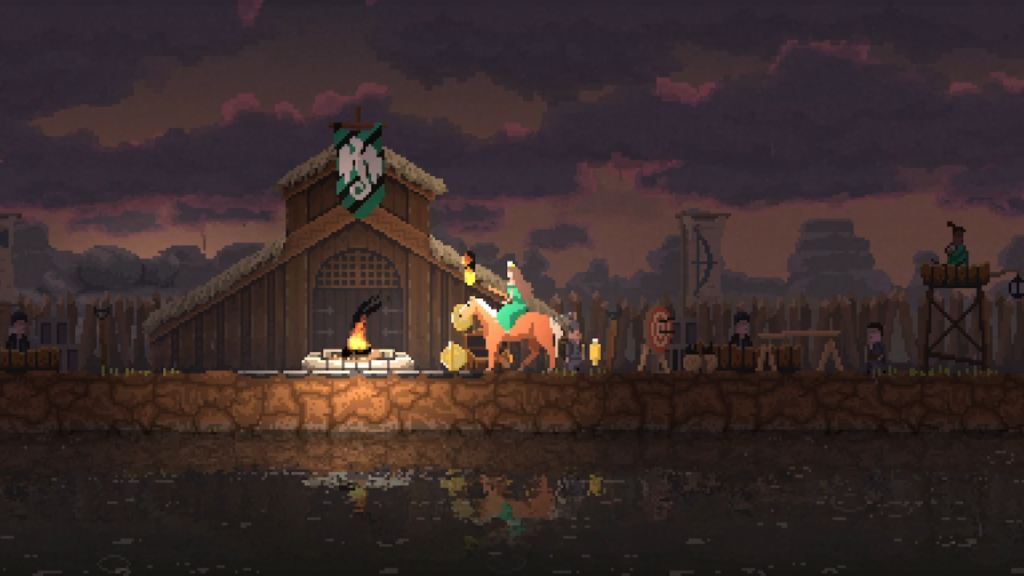
My second run I made it to day 13 or so, only to get caught outside my settlement walls, unable to make it back before nightfall and quickly surrounded by monsters. Safe to say I lost my crown and was thoroughly disappointed, but this was a learning opportunity that further reinforced the importance of timing in this game.
I once again started anew. Despite it being only my third playthrough the pacing started to really take its toll on my enjoyment of kingdom. I realized how long I felt it took to rebuild up to my prior run, despite being able to act on past mistakes and optimize my time and resources it really started to feel like a chore at this point. Rather than enjoying the early stages of the game, it started to feel like a chore. Generally speaking, roguelike and roguelites tend to be some of my favorite games, however, the pacing of Kingdom really killed the enjoyment for me. This third run, I made it the furthest of all prior runs. I managed to upgrade my settlement to a true kingdom, reaching the highest tier of upgrades possible. Nonetheless, rather than being proud of this, I dreaded the thought of having to restart if I were to make a mistake.
I managed to expand my kingdom far to the left and right of it’s central starting point. If I had to guess, I had somewhere around 50 villagers all playing a part in keeping the city thriving and safe. I no longer needed to rely on hunters for gold as I had established farms within my city walls and villagers were able to safely grow crops, which in turn, provided me with pieces of gold. I even managed to employ enough archers and knights – late game units – to go on the offensive. No longer was I cowering behind the safety of my walls, rather I had group of units venture into the wilderness and demolish the portals from which the monsters would spawn.
However, after hours of progress, it all came to a silly end…
Without spoiling the surprise, demolishing a portal provides a useful benefit to the player; however, to use this mechanic you must stand still, and you are briefly unable to see your character. As such, I was partaking in this mechanic during the day, when I assumed it would be safe to do so. To my surprise, the message appeared on my screen.
No Crown, No King.
Rarely do I ever rage quit games, however, this managed to do it for me. I immediately hit alt+f4 because of disappointment and the feeling that this loss was unjustified. I genuinely didn’t understand how I could’ve lost as it was venturing out in the middle of the day and there were no hostile portals around my character. Losing hours of progress in this manner, and already having a problem with the pacing of this game was the nail in the coffin for me.
Ultimately, I don’t have many critiques of Kingdom. The open-ended exploration of the game is captivating and it’s exciting to discover all the different interactions and mechanics. I was surprised to discover how deep the game goes, despite only having four buttons. The art style is a pleasure to look at, especially with the reflective effect of the water at the bottom of the screen. However, even though my only problem with this game is the pacing, I found it to be enough of a problem that I’m not compelled to try again. Realistically, after having such a successful third run, I could probably play it out and reach the end – assuming there is one – but, I simply don’t have the motivation to slowly build back up to the point I reached in my final playthrough.
As a final thought, I’ve seen that this game is available on mobile, and I truly believe it suits that format much better than PC. It would work far better as a game you pick up for twenty to thirty minutes, make some progress, then put it away to come back to later.
Despite my frustration, I would still recommend you try Kingdom yourself. After spending time with it, I realized that it’s a unique take on real-time strategy games where ultimately, you’re still the one making all the decisions of which buildings to construct, which units your produce and where you assign them, however, you’re not doing so from a top-down perspective as you would in most RTS. The developers have managed to turn a simply control scheme to a truly deep game, as such I’m sure anyone could get at least a couple hours of fun out of this unique indie title.
